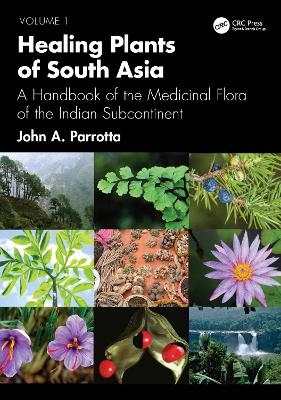
Healing Plants of South Asia
CRC Press (Verlag)
978-1-138-03605-5 (ISBN)
- Noch nicht erschienen
- Portofrei ab CHF 40
- Auch auf Rechnung
- Artikel merken
South Asia, a region of outstanding biological diversity, is home to approximately 2.1 billion people whose rich cultural traditions include sophisticated knowledge of the properties and uses of thousands of native and introduced plant species. Plant-based drugs, integral to the traditional medical systems of India and neighboring countries, play a central role in health care throughout the region and beyond, as regional and global demand for therapeutically valuable plants continues to grow.
However, the ongoing transformation and degradation of forests and other natural ecosystems in this region due to rapid environmental and socioeconomic changes, poses serious challenges for the conservation and sustainable utilization of its medicinal plant wealth. Efforts to conserve the region’s rich biodiversity and associated traditional knowledge require up-to-date information on the status and trends of these resources and their importance for health care and livelihoods. Healing Plants of South Asia: A Handbook of the Medicinal Flora of the Indian Subcontinent helps to address this need.
The work’s introduction provides overviews of South Asia’s diverse systems of traditional medicine, as well as the region’s biogeography, ecosystem and plant species diversity and associated conservation challenges. Subsequent chapters focus on nearly 2,000 species of plants most commonly used in traditional medicine within the region. In chapters devoted to ferns and lycophytes (including 59 species), conifers (20 species) and flowering plants (1849 species), the information provided draws upon a wide variety of authoritative published sources as well as reliable online databases. Entries for each species include: currently accepted scientific names and common synonyms; vernacular names in the major regional languages; a complete botanical description; information on the species’ ecology and conservation status; traditional therapeutic uses in Ayurveda, Unani, Siddha, Tibetan medicine, and more localized folk medical systems; and key references. The majority of these species are also beautifully illustrated with photos and/or botanical drawings.
Healing Plants of South Asia: A Handbook of the Medicinal Flora of the Indian Subcontinent will be of value to students, scientists and professionals in a number of fields, including pharmacology, pharmaceutics, food chemistry and nutrition, natural products chemistry, ethnobotany and ethnomedicine. It should also appeal to conservationists, community development practitioners, industry, and policy makers, among a host of those involved in the world of medicinal plants and traditional medicine in South Asia.
John Parrotta, Ph.D., is a forest scientist engaged in research for over 40 years, in Puerto Rico, Brazil, India and other countries worldwide. His areas of interest and expertise include tropical forest ecology, biodiversity conservation, ecology and management of planted forests, forest landscape restoration, forest history, and traditional forest-related knowledge. He is the author of nearly 200 scientific publications, including two books in the fields of traditional forest knowledge and medicinal plants, Healing Plants of Peninsular India (CABI: 2001), and Traditional Forest Knowledge: Sustaining Communities, Ecosystems and Biocultural Diversity (Springer: 2012). He holds a B.A. in Biology and B.S. in Chemistry from Merrimack College (in Massachusetts, USA), an M.Sc. in Ecology from the University of Aberdeen (Scotland, UK), and a Ph.D. from Yale University. A career scientist and national research program leader for international science issues with the USDA Forest Service, his current work focuses on the conservation, restoration and sustainable management of forests worldwide. Dr. Parrotta also serves as the president (2019-2024) of the International Union of Forest Research Organizations (IUFRO) in which he has held many leadership positions since 1993, He also serves as an editorial board member for several scientific journals, including Restoration Ecology, Ecosystems and People, and Forest Ecology and Management.
Chapter 1. Introduction: Plant Wealth and Human Health in South Asia.
Chapter 2. Pteridophytes (Ferns and Lycophytes).
Chapter 3. Gymnosperms (Conifers, Cycads, Ginkgo, and Gnetophytes).
Chapter 4. Angiosperms (Flowering Plants).
| Erscheint lt. Verlag | 30.9.2024 |
|---|---|
| Zusatzinfo | 4 Tables, black and white; 1790 Halftones, color; 1790 Illustrations, color |
| Verlagsort | London |
| Sprache | englisch |
| Maße | 210 x 280 mm |
| Themenwelt | Medizin / Pharmazie ► Allgemeines / Lexika |
| Naturwissenschaften ► Biologie | |
| Weitere Fachgebiete ► Land- / Forstwirtschaft / Fischerei | |
| ISBN-10 | 1-138-03605-6 / 1138036056 |
| ISBN-13 | 978-1-138-03605-5 / 9781138036055 |
| Zustand | Neuware |
| Informationen gemäß Produktsicherheitsverordnung (GPSR) | |
| Haben Sie eine Frage zum Produkt? |
aus dem Bereich


